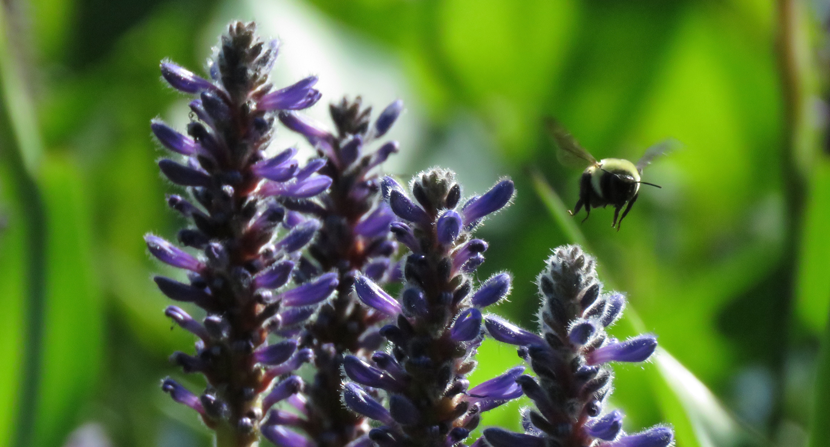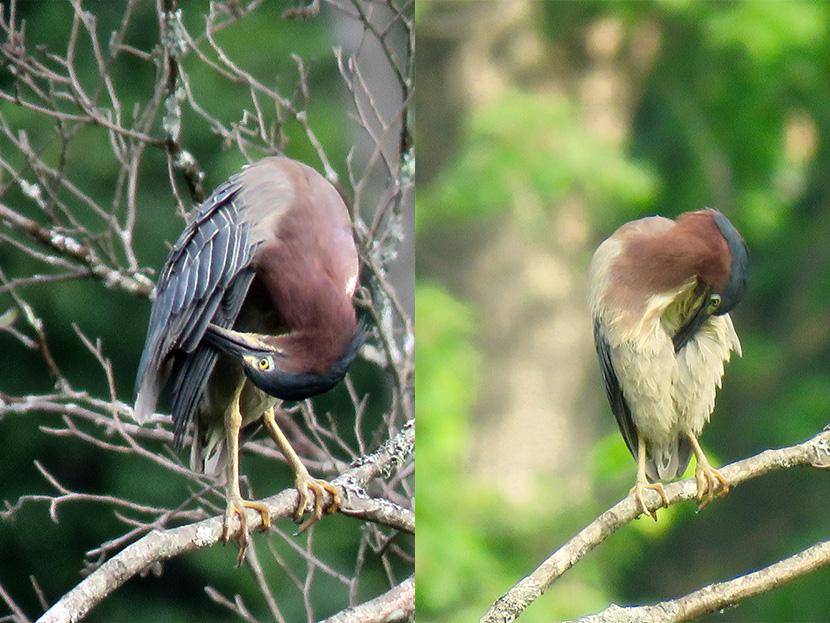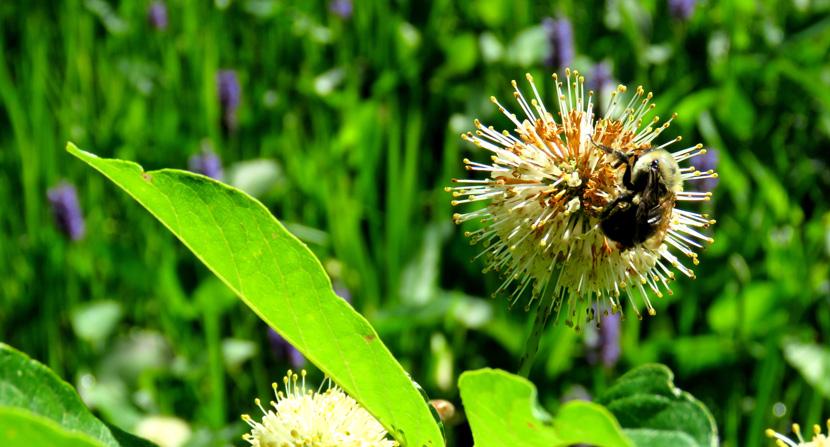July scenes from a floodplain forest
- Tags:
- Wildlife

July on the floodplain brings a heavy truth: Our capacity to see joy in nature comes with a flipside: the intense sorrow for what we are losing.
Aldo Leopold wrote, “The months of the year, from January up to June, are a geometric progression in the abundance of distractions.” It certainly seems so on the floodplain, especially during May and June when the distractions are so abundant that it’s hard to choose what to watch because you’re always missing something in the other direction.
And then there’s July...
July is a month that saunters in and lies down, like a fat old dog in the shade, not moving much but panting, with a halo of flies. After the geometric progression of distractions, July seems static, humid and dense, with so much photosynthesis happening that you can practically hear it. This sense of stasis is an illusion though. July has its own unique distractions but they’re hidden behind a thick green curtain of alder and maple leaves, pickerel weed and ostrich fern. You have to peer behind that curtain to see what’s going on.

While the flickers engage in noisy flicker business above the Mill Brook, the Buttonbush Marsh is the undisputed kingdom of red-winged blackbirds. They own the marsh, and male red-winged blackbirds are very assertive about their property rights. A great blue heron intent on catching a meal will have its head dive-bombed until it flaps away, neck stretched straight out in front, squawking its indignation to the cattails. I watched a hunched up green heron in an alder, on receiving the same redwing harassment, give out a hoarse yelp and shoot up its neck, adding about six inches to its height, with its erect crest adding another inch or so. Unlike its long-legged cousin, this much smaller heron held its ground, and after its hair-on-end agitation, resumed preening. Watching a green heron preen, for both the beauty of its feathers and the comedy of its contortions, is worth the price of admission-- wet sneakers and mosquito bites.

Then there are the pollinators. July is a month of rampant plant growth, bloom and pollination. The marsh, full of pickerelweed and buttonbush, with stands of Joe Pye weed and a sprinkling of cardinal flowers, is a mecca to our pollinators. July only seems like a slow, languid month until you’ve taken some time to watch a hummingbird, or a bumblebee.
I have to digress for a moment here on the subject of bumblebees. As an 8 year old in late 1960s New Jersey, I had a ten-year-old brother, who in the way of many older brothers was my archenemy. A child of the cold war, I had an instinctive understanding of defensive weaponry. We had several rhododendrons that in early summer would be in full blossom; each blossom full of bumblebees.
I had an empty coffee can-- my preferred container for the earthworms that I used for fishing bait. One day while sitting outside doing nothing, which is what children did before screens, I realized that I could gently shake a single rhododendron blossom into my coffee can, pop the plastic lid on the can, and be in possession of a can gloriously full of buzzing bumblebees-- a handy deterrent. Should my equally idle brother come along and need deterring, I need only flip open the lid. I mention this because fifty years later, I think it’s sadly no longer possible to effortlessly collect a coffee can full of bumblebees.

Bumblebee numbers have been falling for years. Last year a research study from the New Hampshire Agricultural Experiment Station at the University of New Hampshire found that “three of the state’s most important bumble bee species have experienced drastic declines and range constriction over the last 150 years, with a fourth bee also in significant decline.” Bombus affinis-- the scientific name for the rusty-patch bumblebee was the first bee listed as an endangered species in the continental US.
Curious, I looked up Bombus affinis online and on seeing it, felt--well, it’s hard to describe. There may be a single word in another language for what I felt, but I’m pretty sure that there isn’t one in English. Part of that feeling was joyful recognition. I’m sure that this was the bee, with its distinctive rust stripe, that was so abundant in my childhood that I could swoop up a dozen or so from a single rhododendron bloom. The other part of the feeling was dismay for having forgotten something essential-- how was it that I didn’t notice the difference between this bee and the others (imposters!) that for years I’ve watched foraging in the Joe Pye Weed blossoms? Along with that, the pain of loss. When did I last see this old friend? I don’t know, but the reality is that I might never see one again.
This grave, uncomfortable truth makes protecting expanses of marsh and riparian landscape so critical. The pickerelweed at the Conservation Center is still buzzing with some species of bumblebee. As the native blooms support our bumblebees, the bumblebees support not only these plants but also agriculture as a whole. With the decline and loss of any one species, we lose an integral piece of the whole and a piece of ourselves. I didn’t know this was where my thoughts on July were headed, but our capacity to see joy in nature comes with a flipside: the intense sorrow for what we are losing.
Since I started with Aldo Leopold, I’ll end this with a quote from another naturalist, Michael McCarthy, whose book, The Moth Snowstorm, is a passionate elegy for the losses we’ve had in just the past half century. McCarthy calls us to love nature with, “ a love which is informed… a love which recognising the scale of the threat, is engaged, a love which delighting in a flower or a bird, or a meadow or a marsh, or a lake or a forest, or a range of grasslands, realises it may not be there next year, and will do whatever it can to protect or save it; a love which can be fierce.”
A heavy weight of truth and obligation to be found on the small, furred back of a bumblebee in July.
